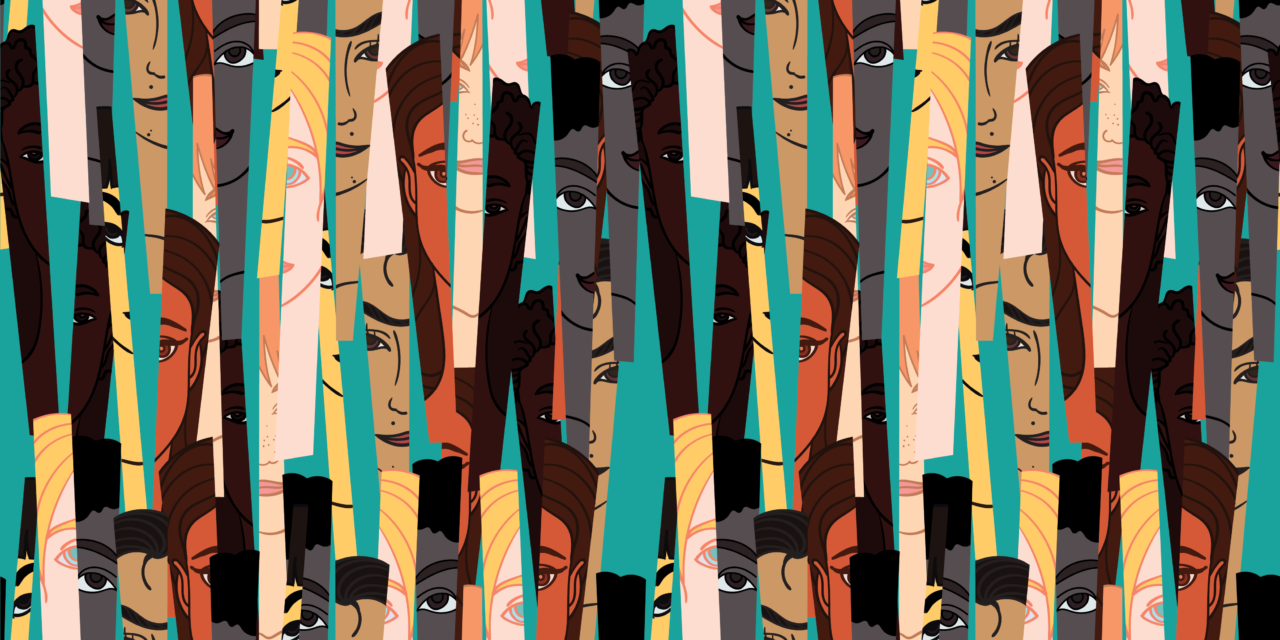Just across from the drama room, a hung photo depicts students at an assembly in 1961. With arms raised high in some sort of chant, they wield sticks and spears. Some opt for their denim shorts, while others sport wrapped skirts. One student swings above on a rope. Others stand by watching, costumed in blackface.
Perhaps it was just a result of juvenile insolence. After all, high schooler’s brains are still developing. It could just be a fun skit, and maybe no one meant any offense. An easy excuse might be that the assembly was just a product of its time—a different era in which people saw this heavily practiced custom as acceptable. Any explanation sought out makes sense in one way or another. However, none can cover the inherently racist roots of the act.
The exact origins of blackface cannot be clearly traced, but dates roughly around the early 1800s. This theatrical technique of coating skin in shoe polish or greasepaint helped white actors reinforce negative stereotypes about African Americans. In blackface portrayals of being lazy, ignorant, or cowardly, these actors asserted their supposed superiority.
“[Blackface] allows a society to routinely and historically imagine African Americans as not fully human,” says David Leonard, a professor of comparative ethnic studies and American studies at Washington State University.
It can’t be said whether or not these students meant to take such drastic measures in the auditorium that day, but the photo still hangs over the hallways—a heavy reminder of Orem High’s imperfect past.
Thankfully, school-supported racism no longer exists in such a horrific manner. However, Orem High has not yet washed its hands completely of overt racism. Often perpetuated by students, incidents of hate speech figuratively and literally cover the school.
“I’ve twice had to call the custodians to clean up racist graffiti in this bathroom, right across from the library,” says Mr. Jones, a librarian at OHS, “I don’t think you can dismiss that as a juvenile prank. I think that’s on its face the presence of racism.”
While the motive and origins of these acts are unknown, they still sting the school’s environment. OHS prides itself on its principles of inclusion and acceptance.
“Our student body is very welcoming,” says student body president, Julia Black.
And for the most part, this is true. School year themes of the past, such as “We Are One” and “Together We Rise,” highlight this ideal. Numerous clubs, like Hope Squad or Gay-Straight Alliance, advocate for kindness and embracement. Some might even consider the atmosphere of OHS a step above. And yet, these offensive attacks can chase away and harm students of color, ultimately undermining the inclusive efforts of every individual and organization at OHS.
This situation of discrimination cannot be cured by washcloths, or even the apologies of the administration. Sharpie on the mirror indicates a larger problem . The invalidation of ethnic students extends past visible forms of racism and into more subtle, overarching aggressions.
According to The Washington Post, a school district qualifies as diverse if no race makes up more than 75% of the population. Alpine School District has a Caucasian population of 85.2%. This lack of diversity could account for the seemingly superficial unity of Orem High School, while continuing to alienate minorities.
With a massive majority of white students and staff, this claim brings to light the intangible cultural tendencies of OHS. In an environment where little differences exist between students, there is little opportunity for individuals to challenge their beliefs and opinions—especially those pertaining to race.
OHS English teacher, Mrs. Poole says, “I think there’s a lot of people who have biases and beliefs that they don’t realize are racist or coming from white supremacy specifically.”
These biases can spread not just from student to student, but, more consequently, from teacher to student. Teachers tend to create classrooms that reflect their own upbringing and culture, and this concept is only amplified in a place like Utah County, where the staff is predominantly white. These learning environments can be inequitable if they frequently ignore the circumstances of minority students.
“I feel like some teachers at this school already look at Hispanics, or any other race, as bound to fail,” says Brandon Beccera, a member of OHS student council. “It’s the stereotype of the school.”
With predetermined opinions about minority students, some teachers immediately inhibit these students’ ability to learn and grow at school. On top of this, teachers actively discriminating against these students of color only contributes to the years of institutionalized racism already working against them at school. No tolerance, English-only learning discourages diversity, and even makes it impossible for some students to pass state testing. Anything from the types of books the teachers prefer to the questions they ask could possibly be targeted towards white individuals, leaving minorities to play catch-up.
Yet every year, hundreds of these ethnic students surmount the barriers before them, conquering AP classes and going on to graduate. But the fact that students must face these trials in the first place is its own tragedy. Sadly in certain cases, some minorities feel cornered by the stereotypes set upon them by fellow students and their teachers, and fall short of academic expectations.
Even outside of academics, daily school is still a battleground for many students of color. “It’s hard to even feel comfortable learning,” says OHS student Samantha Garcia, “or to even go into a classroom and feel safe.” Several minorities at OHS expressed feeling judged and even threatened by their white counterparts.
“I know we have some teachers who cannot tell their Latino students apart. And to me that feels like a very racist thing that’s happening,” says Poole, “they don’t know these student’s names, but they can usually tell me their Caucasian students’ names.” Another teacher observed that minority students are punished more harshly than white ones involved in the same situation, like a fight, or skipping class.
With all these issues revolving around race, what sort of alarms arise at the level of administration and beyond? How does Orem High school actively combat instances of both obvious and implied racism?
“I think that there is a robust system in the district for looking at these issues,” says Jones, “and I think that there are very good, qualified people who investigate and conduct professional development related to cultural sensitivity.”
Respecting Ethnic and Cultural Heritage (REACH) is set in place by Alpine School District in an attempt to teach cultural awareness and sensitivity. Approved by the U.S. Department of Education, all teachers, counselors, and administrators are required to participate in this training. Orem High School received REACH instruction in March of 2020.
Even without this required education, many teachers at Orem High School strive to make a positive difference in the lives of their minority students. Poole says she works hard to call out racist behavior in her classroom. And other teachers go out of their way to incorporate multicultural lessons. With a diversity score of 45%, Orem High stands 2% above the state average.
All of these efforts seem to trickle down to the student body in one way or another. Recently, the elaborately planned “Diversity Week” showcased cultures of all kinds. At lunchtime activities, OHS students enjoyed the song and dance of the Polynesian Club. “Latinos in Action did Loteria,” says Baccera. This display of diversity inspired connection at Orem High, one of the many steps toward a unified student body.
To bolster representation at Orem High, Baccera hopes to increase the amount of activities that LIA performs. Emerging clubs such as the Chinese Club continue to add to the overall diversity of OHS. And perhaps this next school year will see the creation of more organizations that celebrate culture.
Students in positions of leadership actively look to improve the atmosphere of Orem High. In response to the assembly photo of students in blackface, future student body Vice President Walter Fowler says, “the picture doesn’t reflect Orem High’s values, and should be taken down to show that Orem cares about all of its students, especially the enrolled minorities.”
Orem High School has come a long way since its founding in 1959. In the place of offensive assemblies, the auditorium of Orem High rings with songs of inclusivity. But the journey towards cultural acceptance is not yet complete. Hopefully, the brave steps of thoughtful OHS students and staff will turn into longer strides.
“We need to rise together as a unified Student Body,” says Fowler, “in order to move past racism and prejudice.”
This article will appear in the May issue of The Tiger Times.
Clarissa Hernandez
Latest posts by Clarissa Hernandez (see all)
- Hiding in Plain Sight - May 2, 2021






Extremely well written article Clarissa! OHS isn’t alone in the state with issues of racism, In fact they’re probably far better than most of the rural schools in the state.